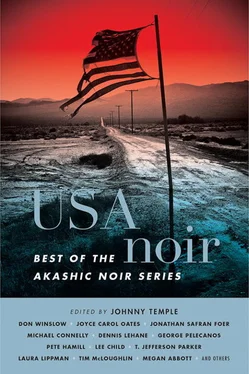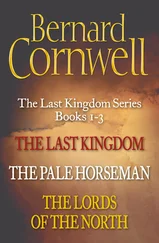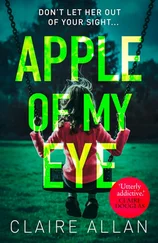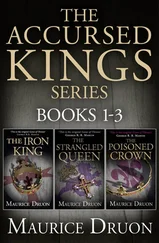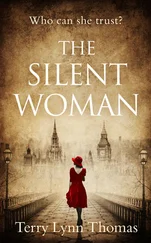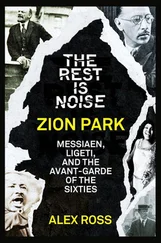Johnny Temple - USA Noir - Best of the Akashic Noir Series
Здесь есть возможность читать онлайн «Johnny Temple - USA Noir - Best of the Akashic Noir Series» весь текст электронной книги совершенно бесплатно (целиком полную версию без сокращений). В некоторых случаях можно слушать аудио, скачать через торрент в формате fb2 и присутствует краткое содержание. Город: New York, Год выпуска: 2013, ISBN: 2013, Издательство: Akashic Books, Жанр: Триллер, Детектив, на английском языке. Описание произведения, (предисловие) а так же отзывы посетителей доступны на портале библиотеки ЛибКат.
- Название:USA Noir: Best of the Akashic Noir Series
- Автор:
- Издательство:Akashic Books
- Жанр:
- Год:2013
- Город:New York
- ISBN:978-1-61775-189-9
- Рейтинг книги:3 / 5. Голосов: 1
-
Избранное:Добавить в избранное
- Отзывы:
-
Ваша оценка:
- 60
- 1
- 2
- 3
- 4
- 5
USA Noir: Best of the Akashic Noir Series: краткое содержание, описание и аннотация
Предлагаем к чтению аннотацию, описание, краткое содержание или предисловие (зависит от того, что написал сам автор книги «USA Noir: Best of the Akashic Noir Series»). Если вы не нашли необходимую информацию о книге — напишите в комментариях, мы постараемся отыскать её.
USA Noir: Best of the Akashic Noir Series — читать онлайн бесплатно полную книгу (весь текст) целиком
Ниже представлен текст книги, разбитый по страницам. Система сохранения места последней прочитанной страницы, позволяет с удобством читать онлайн бесплатно книгу «USA Noir: Best of the Akashic Noir Series», без необходимости каждый раз заново искать на чём Вы остановились. Поставьте закладку, и сможете в любой момент перейти на страницу, на которой закончили чтение.
Интервал:
Закладка:
I went home and turned on my computer. Everywhere you looked in Princeton, there I was. There were dozens of me.
Hi, it’s me. I know I’m not supposed to call, but I don’t care. I’m sad. I’m in trouble. Just with myself. I’m in trouble with myself. I don’t know what to do and there’s no one to talk to. You used to talk to me, but now you won’t. I’m not going to ruin your life. I don’t know why you’re so afraid of that. I’ve never done anything to make you think I’m in any way unreliable. But I have to say, the more you act on your fear that I will ruin your life, the more compelled I feel to ruin it. I’m not a great person, but I’ve never done anything to you. I know it’s all my fault, I just don’t know how. What is it? I’m sorry.
I was spending more time each day inside of the map, traveling the world—Sydney, Reykjavik, Lisbon—but mostly going for walks around Princeton. I would often pass people I knew, people I would have liked to say hello to or avoid. The pizza in the window was always fresh, I always wanted to eat it. I wanted to open all of the books on the stand outside the bookshop, but they were forever closed. (I made a note to myself to open them, facing out, on the fourth of the next month, so I would have something to read inside the map.) I wanted the world to be more available to me, to be touchable.
I was puzzled by my use of the map, my desire to explore places that I could easily explore in the world itself. The more time I spent in the map, the smaller the radius of my travels. Had I stayed inside long enough, I imagine I would have spent my time gazing through my window, looking at myself looking at the map. The thrill or relief came through continual reencounters with the familiar—like a blind person’s hands exploring a sculpture of his face.
Unable to sleep one night—it was daytime in the map, as always—I thought I’d check out the progress on the new dorms down by the water. Nothing could possibly be more soul-crushing than campus construction: slow and pointless, a way to cast off money that had to either be spent or lost. But the crushing of the soul was the point. It was part of my exile inside of the map inside of my house.
As I rotated the world to see the length of the scaffolding, something caught my attention: a man looking directly into the camera. He was approximately my age—perhaps a few years older—wearing a plaid jacket and Boston Red Sox hat. There was nothing at all unusual about someone looking back at the camera: most people who notice the vehicle are unable to resist staring. But I had the uncanny sense that I’d seen this person before. Where? Nowhere, I was sure, and yet I was also sure somewhere. It didn’t matter, which is why it did.
I dropped myself back down on Nassau Street, drifted its length a few times, and finally found him, standing outside the bank, again looking directly into the camera. There was nothing odd about that, either—he could have simply walked from one location to the other, and by chance crossed paths with the vehicle. I rotated the world around him, examined him from all sides, pulled him close to me and pushed him away, tilted the world to better see him. Was he a professor? A townie? I was most curious about my curiosity about him. Why did his face draw me in?
I walked home. It had become a ritual: before closing the map, I would walk back to my front door. There was something too dissonant about leaving it otherwise, like debarking a plane before it lands. I crossed Hamilton Avenue, wafted down Snowden, and, one giant stride at a time, went home. But when I was still several hundred feet away, I saw him again. He was standing in front of my house. I approached, shortening my strides so that the world only tiptoed toward me. He was holding something, which I couldn’t make out for another few feet; it was a large piece of cardboard, across which was written: YOU WON’T GET AWAY WITH IT .
I ran to the actual door and opened it. He wasn’t there. Of course he wasn’t.
As computing moves off of devices and into our bodies, the living map will as well. That’s what they’re saying. In the clumsiest version we will wear goggles onto which the map is projected. In all likelihood, the map will be on contact lenses, or will forgo our eyes altogether. We will literally live in the map. It will be as visually rich as the world itself: the trees will not merely look like trees, they will feel like trees. They will, as far as our minds are concerned, be trees. Actual trees will be the imitations.
We will continuously upload our experiences, contributing to the perpetual creation of the map. No more vehicles: we will be the vehicles.
Information will be layered onto the map as is desired. We could, when looking at a building, call up historical images of it; we could watch the bricks being laid. If we crave spring, the flowers will bloom in time lapse. When other people approach, we will see their names and vital info. Perhaps we will see short films of our most important interactions with them. Perhaps we will see their photo albums, hear short clips of their voices at different ages, smell their shampoo. Perhaps we will have access to their thoughts. Perhaps we will have access to our own.
On the fourth of the next month, I stood at my door, waiting for the vehicle, and waiting for him. I was holding a sign of my own: YOU DON’T KNOW ME . The vehicle passed and I looked into the lens with the confidence of innocence. He never came. What would I have done if he had? I wasn’t afraid of him. Why not? I was afraid of my lack of fear, which suggested a lack of care. Or I was afraid that I did care, that I wanted something bad to happen.
I missed my wife. I missed myself.
I did an image search for the girl. There she was, posing on one knee with her high school lacrosse team. There she was, at a bar in Prague, blowing a kiss to the camera—to me , three years and half a globe away. There she was, holding on to a buoy. Almost all of the photos were the same photo, the one the newspapers had used. I pulled up her obituary, which I hadn’t brought myself to read until then. It said nothing I didn’t know. It said nothing at all. The penultimate paragraph mentioned her surviving family. I did an image search for her father. There he was.
I entered the map. I looked for him along Nassau Street, and at the construction site where I’d first seen him. I checked the English department, and the coffee shop where I so often did my reading. What would I have said to him? I had nothing to apologize for. And yet I was sorry.
It was getting late. It was always the middle of the day. I approached my house, but instead of seeing myself holding the sign, as I should have, I saw my crumpled body on the ground in front of the door.
I went up to myself. It was me, but wasn’t me. It was my body, but not me. I tilted the world. There were no signs of any kind of struggle: no blood, no bruises. (Perhaps the photo had been taken in between the beating and the appearance of bruises?) There was no way to check for a pulse in the map, but I felt sure that I was dead. But I couldn’t have been dead, because I was looking at myself. There is no way to be alive and dead.
I lifted myself up and put myself back down. I was still there. I pulled all the way back to space, to the Earth as a marble filling my screen in my empty house. I dove in, it all rushed to me: North America, America, the East Coast, New Jersey, Princeton Borough, Princeton Township, my address, my body.
I went to Firestone Library to use one of the public computers. I hadn’t been to the library since the investigation, and hadn’t even thought to wonder if my identity card was still activated. I tried to open the door, but I couldn’t extend my arm. I realized I was still in the map.
Читать дальшеИнтервал:
Закладка:
Похожие книги на «USA Noir: Best of the Akashic Noir Series»
Представляем Вашему вниманию похожие книги на «USA Noir: Best of the Akashic Noir Series» списком для выбора. Мы отобрали схожую по названию и смыслу литературу в надежде предоставить читателям больше вариантов отыскать новые, интересные, ещё непрочитанные произведения.
Обсуждение, отзывы о книге «USA Noir: Best of the Akashic Noir Series» и просто собственные мнения читателей. Оставьте ваши комментарии, напишите, что Вы думаете о произведении, его смысле или главных героях. Укажите что конкретно понравилось, а что нет, и почему Вы так считаете.
